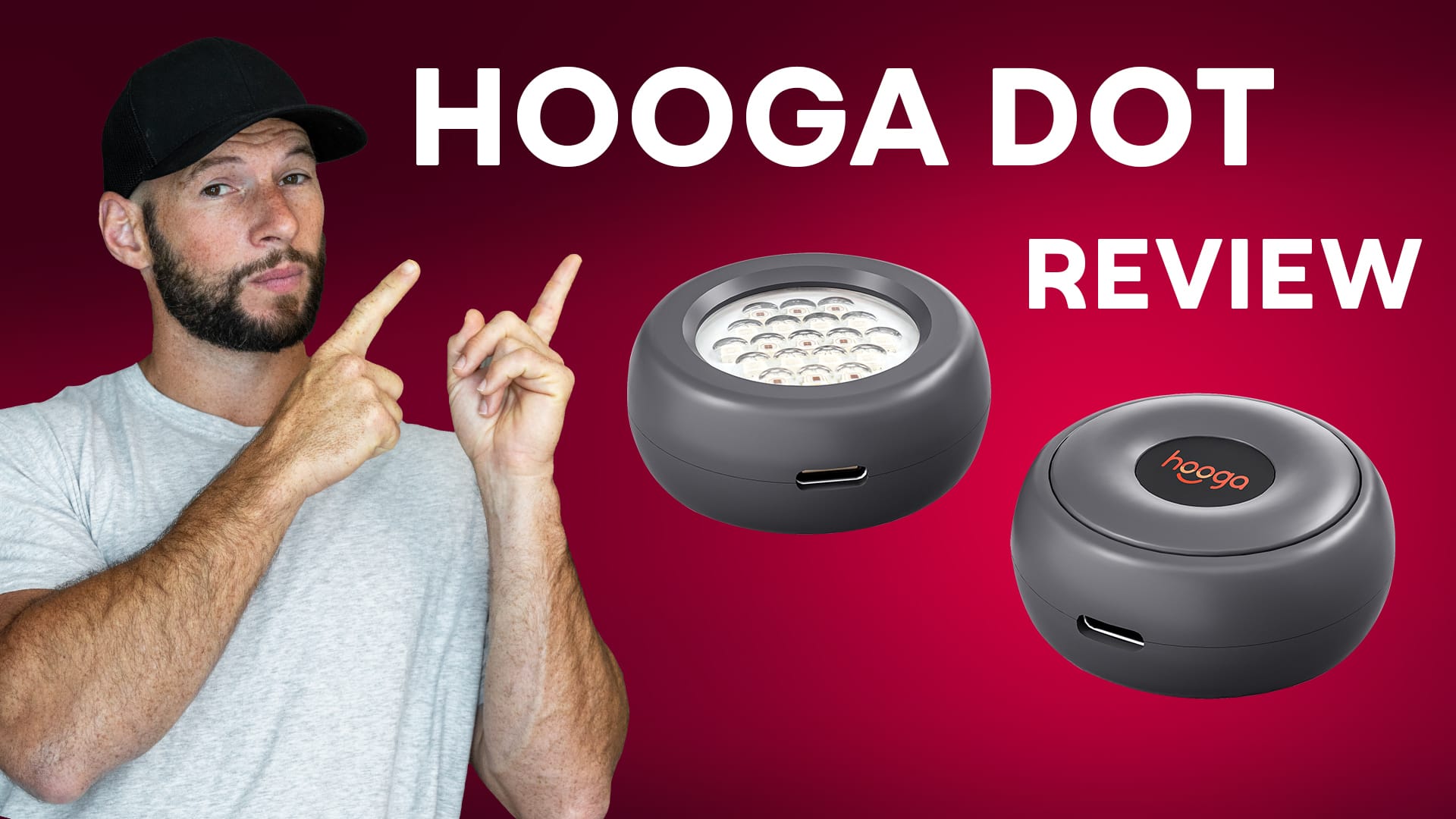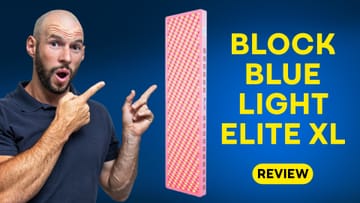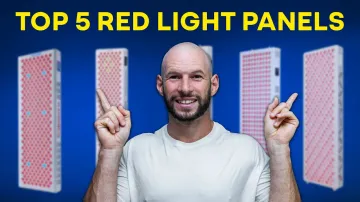Hooga Dot Red Light Therapy Device Review: Tiny but Mighty?
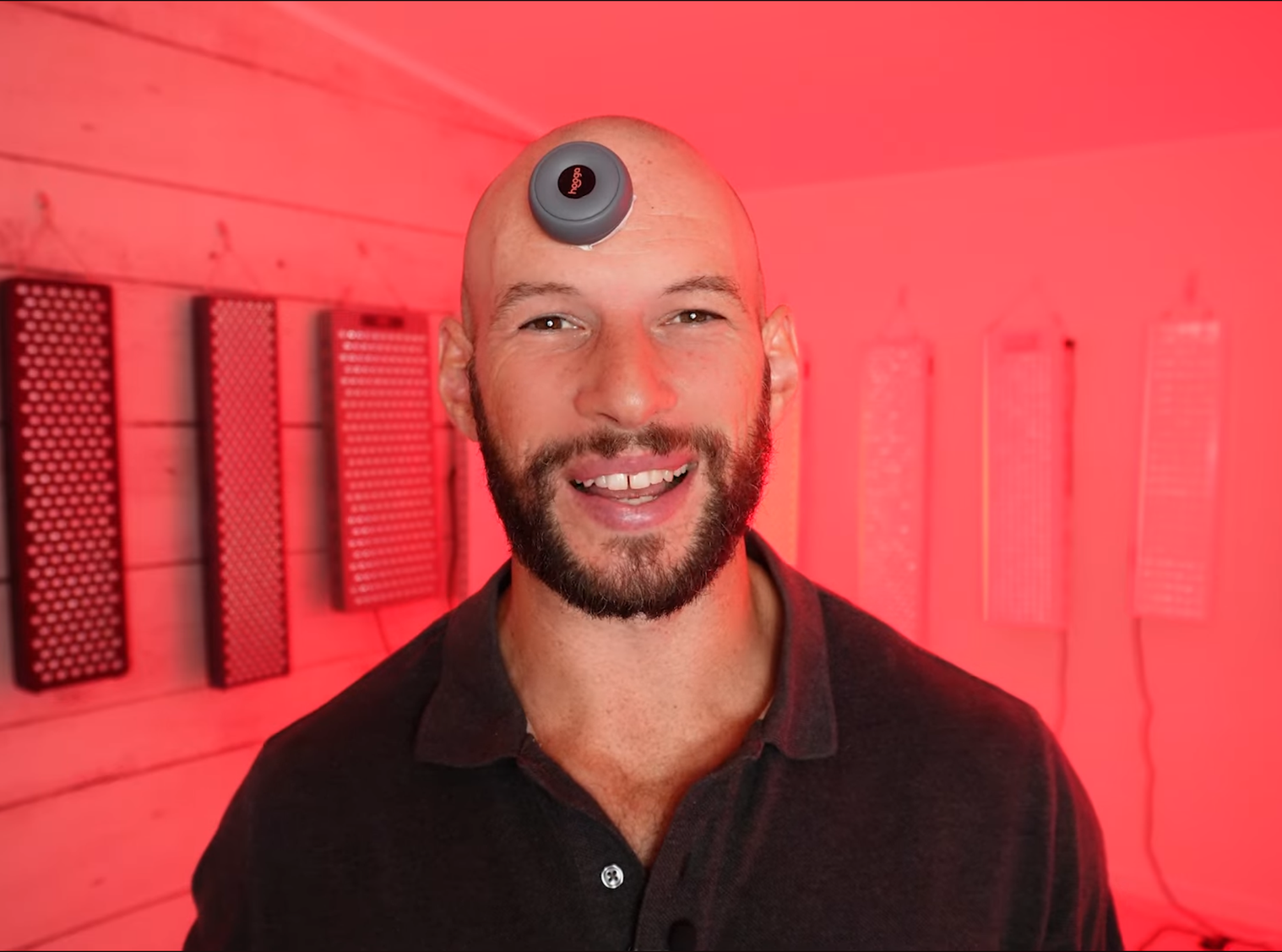
The Hooga Dot offers a compact and portable solution at a relatively affordable price of $70. It’s designed for those who need targeted therapy on the go, making it easy to slip into your bag or even stick to your head. But like any product, it has its strengths and weaknesses.
In this review, I’ll discuss the pros and cons of the Hooga Dot, giving you a clear idea of what to expect. I’ll also compare it to one of its major competitors, the Kineon Move+ Pro, to help you decide which device might be better for your needs.
The Company
Hooga Health, a well-known name in red light therapy, made the Hooga Dot. Hooga has been producing affordable, high-quality red light devices for years now. Recently, they’ve been releasing more premium, feature-packed products, but the Hooga Dot stands out as a return to affordability while still being innovative. At $70, there isn’t anything quite like it on the market, at least not at this price point.
Design and Features
The Hooga Dot sticks to your body using double-sided adhesives, allowing for a hands-free treatment experience. It also comes with small straps that you can use to attach it to your arm, ankle, or other small limbs. With these small straps, you will not strap it around your back or thigh, but it’s still nice to have that option.
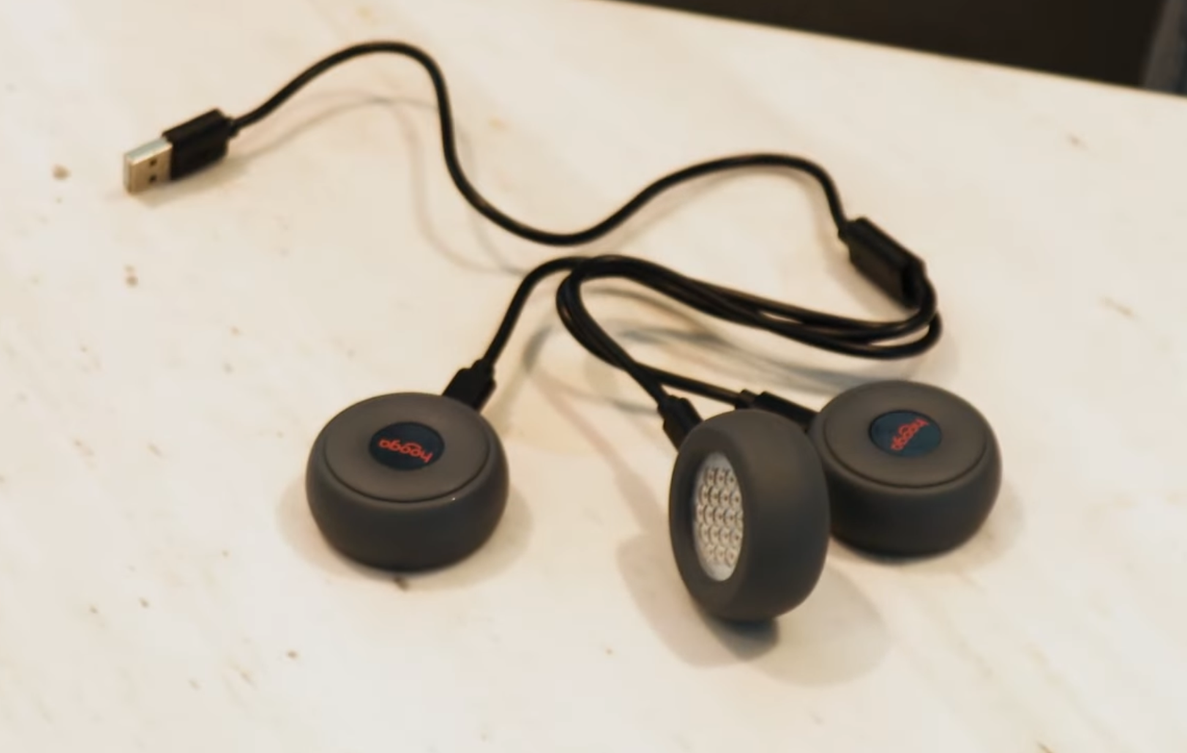
It’s battery-powered, with a USB-C charging port on the bottom and a 15-minute auto shut-off. The device uses red and near-infrared light, with 19 LEDs split between the two wavelengths. You can run the device in red light mode or near-infrared mode or use both at once.
Wavelengths
Hooga claims the Dot emits light at 660nm for red light and 850nm for near-infrared (NIR), the most commonly used and trusted wavelengths in red light therapy. Researchers have thoroughly studied and established the therapeutic effects of these wavelengths, with 660nm specifically targeting skin issues and 850nm penetrating deeper to support muscle recovery and reduce inflammation.
To verify these claims, I fired up my spectrometer:
I ran the Hooga Dot in dual mode, meaning red and NIR lights were active. The results were reassuring: we peaked at 662nm for red light and another at 855nm for NIR. This means Hooga’s stated 660 and 850nm wavelengths are spot on. So, regarding wavelength accuracy, we’re in good territory with the Hooga Dot.
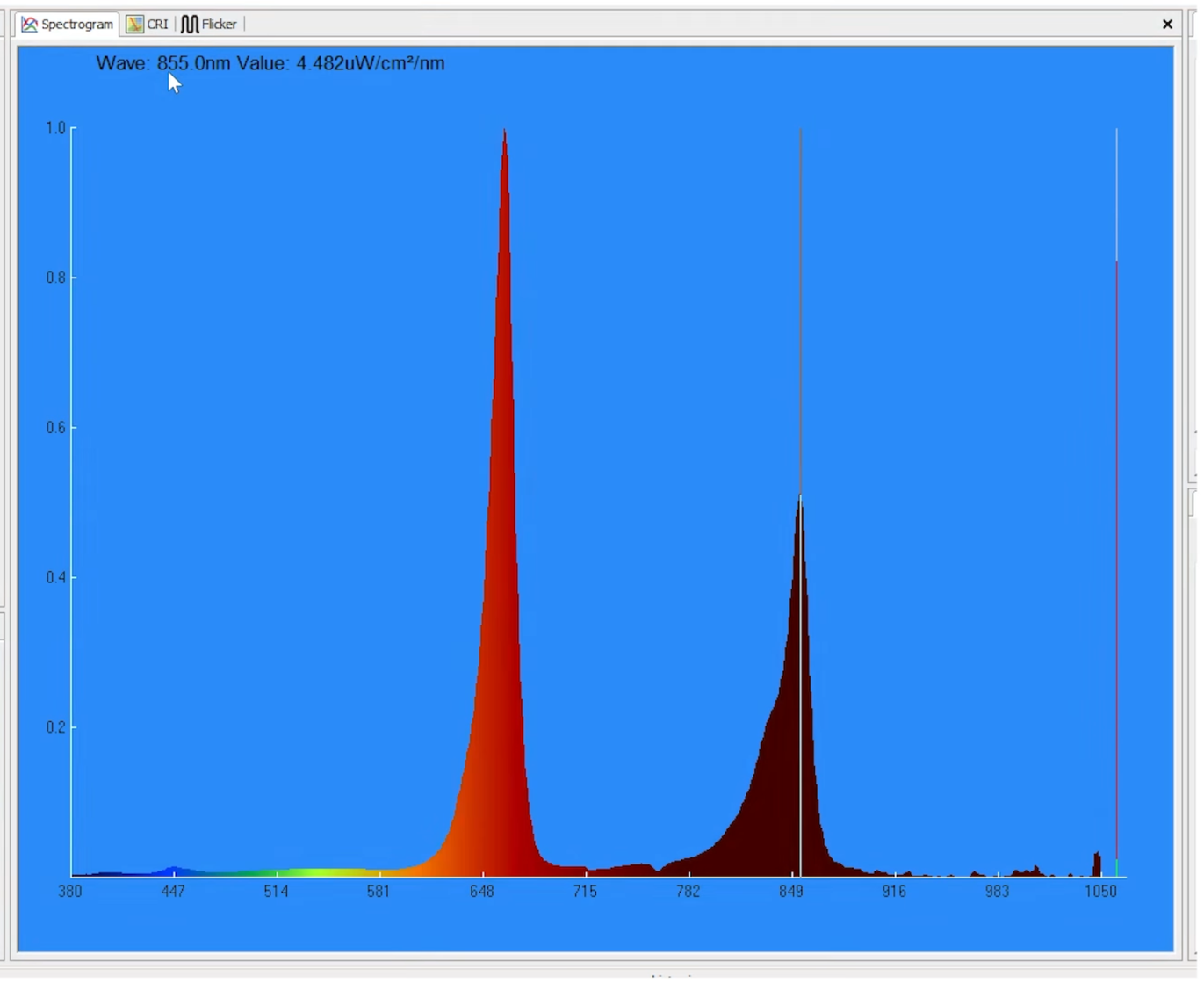
Power Output
Let’s talk power, where things get a bit more complicated. Hooga says the Dot has an impressive 120 mW/cm² of energy. The distance and equipment details for this measurement are unspecified. Since the device is so small, I assume this figure is from the surface.
In my reviews and tests at Light Therapy Insiders, I usually provide irradiance data at a distance of six inches for consistency and benchmarking. So, I did the same with the Hooga Dot. The irradiance dropped significantly at six inches to just 0.4 mW/cm²—miles from the advertised 120 mW/cm².
This isn’t surprising, though, because the power output typically decreases as you move farther from the source. The takeaway here is if you’re using the Dot, you’ll want it as close to the skin as possible.
The results were much more impressive when I tested the device right up against the skin (which is how you’d likely use it). In red light mode, I recorded an irradiance of 68 mW/cm², a respectable number for a device of this size. In the near-infrared mode, the output dropped to 34 mW/cm². The combination of red and NIR lights resulted in a 45 mW/cm² power output.
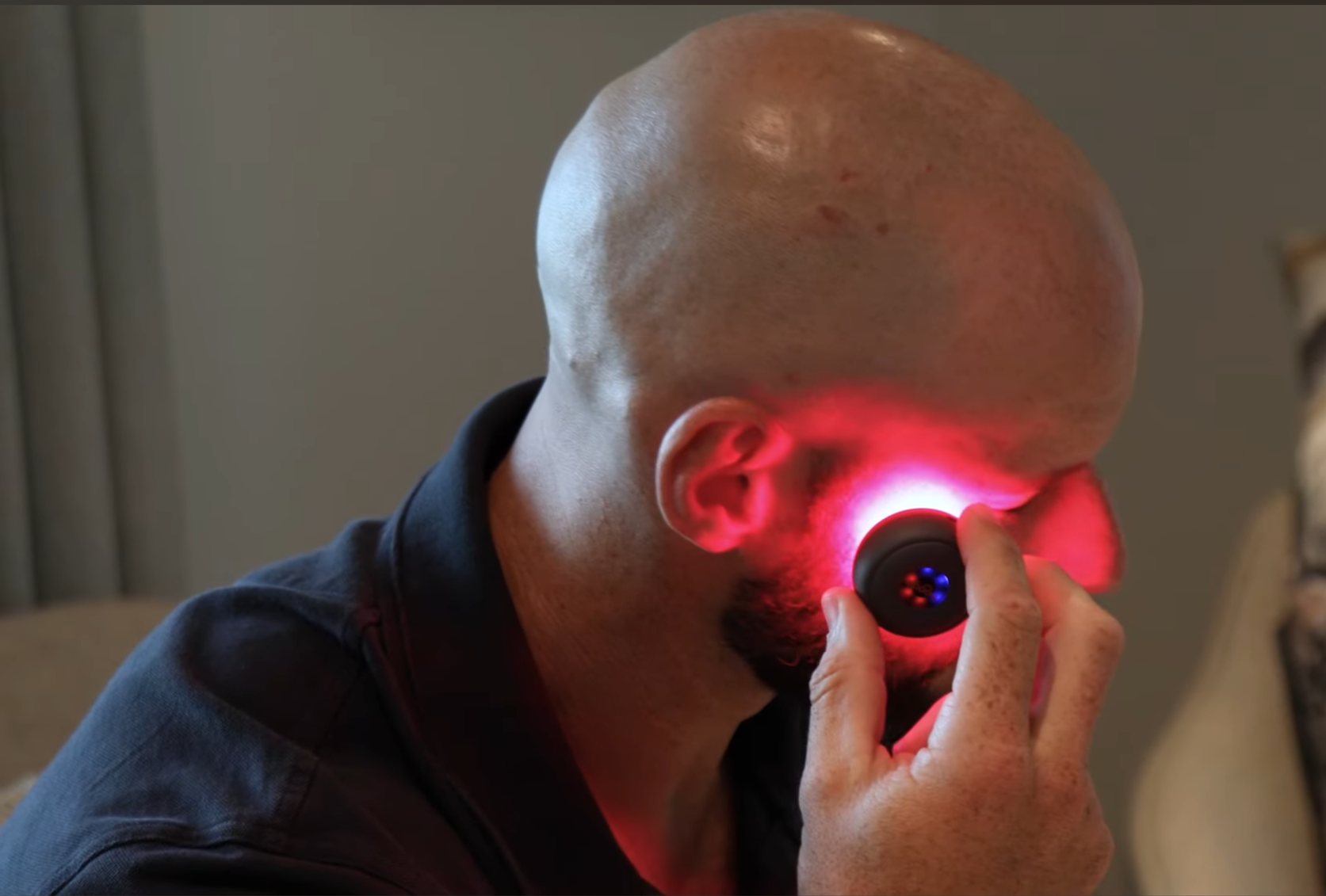
How does this compare to the advertised 120 mW/cm²? Like many companies in this space, Hooga may have used a solar meter to measure its output, which gives inflated readings—often two to three times higher than what a spectrometer will detect.
Unfortunately, this is a common practice in the red light therapy industry. Some brands even exaggerate their numbers purely for marketing, which isn’t great for consumer trust.
Even though the actual irradiance numbers are lower than advertised, they are still solid, particularly for a device intended for a targeted treatment. Even with an output of 30-40 mW/cm², you’ll still receive sufficient light for effective therapy, especially for skin-related benefits such as wrinkle reduction, collagen production enhancement, or sunburn relief.
Price and Shipping:
You can purchase the Hooga Dot individually or opt for a triple pack to treat multiple areas of your body simultaneously.
• A single Hooga Dot retails for USD 79. Using my affiliate link, you’ll save 10%, bringing the price down to around $70.
• If you’re looking for a better deal, Hooga offers a triple-pack option for $199. using my affiliate link, you’ll save 10%, bringing the price down to $180.
Each Pod has one strap and ten adhesives, which should be enough to get you started. If you opt for the triple pack, you’ll receive 30 adhesives. Need more adhesives? No problem—they’re available separately and cost around $5 to $6 for a pack of 20.

Shipping is another factor to consider. For those of you in the U.S., the good news is that shipping is free. However, if you’re ordering internationally, expect to pay between $10 and $20, depending on your location.
After spending some time with the Hooga Dot, I’ve found a mix of strengths and weaknesses worth considering. Let’s dive into the details so you can weigh the benefits and drawbacks.
Pros:
1. Highly Portable and Convenient
The Hooga Dot's size is a game-changer for anyone looking for a portable red light therapy device. It’s small enough to slip into your pocket, backpack, or even a man's bag.
Whether traveling, on a day trip or commuting, the compact size allows you to take it anywhere. It’s also discreet to use in public, especially in near-infrared mode, which is invisible. No one will even know you’re treating a problem area.
2. Great for Cold Sores and Surface-Level Issues
This device shines for surface-level treatments like cold sores. I often get cold sores during long trips, and having a compact device like the Hooga Dot to address outbreaks quickly has been a lifesaver.
3. Multiple Ways to Use It
The Hooga Dot has three methods: holding it, using a strap, or sticking it directly to the skin with adhesives. This versatility adds to its appeal. For example, you can strap it on for hands-free use during a workout or stick it to the body for a more focused, passive treatment session.
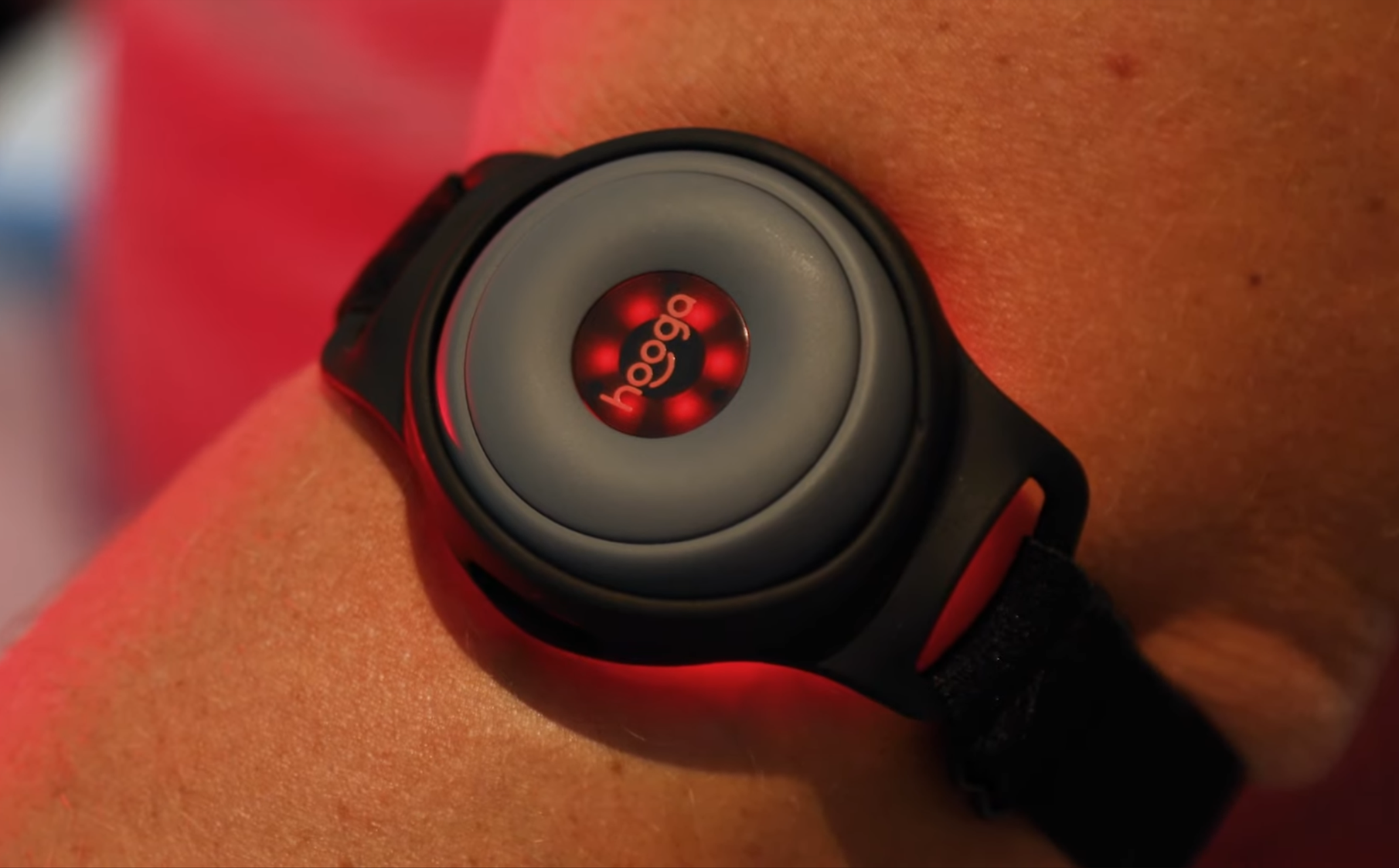
4. Affordable
The price is solid at around $70 (with a discount). If you’re on a budget but still want to test the waters with red light therapy, this device offers a low-cost entry. And if you opt for the triple pack, the value improves, making it even more economical.
5. Surprising Power for Its Size
I have to admit that the power output impressed me. Even though the website claimed 120 mW/cm², I didn’t expect it to deliver. However, during my tests, the actual output was around 30 to 45 mW/cm², which is still decent for a small device. While not as strong as larger panels, it’s sufficient for many surface-level treatments.
Cons:
1. Limited Power for Deep Tissue Treatments
While the Hooga Dot is great for surface-level issues, it lacks the juice to penetrate deep tissues, especially joints or muscles. While respectable for its size, the power output isn’t enough to effectively treat areas like the knees or hips.
If you’re looking for deeper penetration, particularly in near-infrared mode, this device might leave you wanting more.
2. Adhesives Are Fiddly and Costly
Sticking the device directly to the body using adhesives is convenient but imperfect. Applying them can be fiddly and might not hold up well if you’re sweating or moving around a lot.
Plus, you’ll need to buy replacement adhesives frequently, which adds to the ongoing cost. I recommend purchasing extras when you buy the device to avoid the hassle of having to restock later.
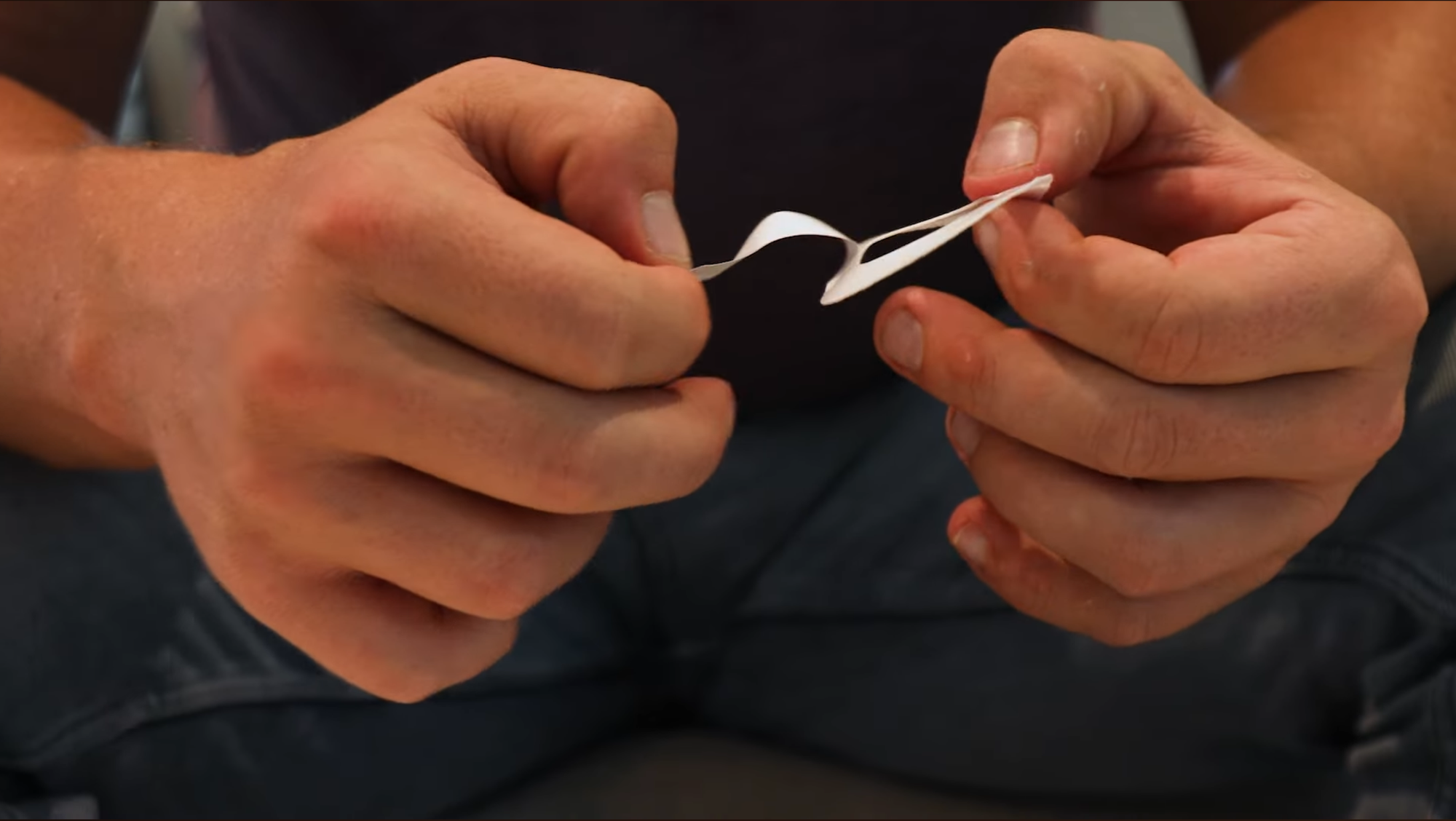
3. Small Strap
The strap is functional but limited in its use. It’s okay for smaller areas like arms or ankles, but you might encounter difficulties securing it around larger body parts. This isn’t a huge issue, but it limits the versatility somewhat.
4. Sensitive Touch Button
The touch-sensitive button on the back of the device is easy to use but almost too sensitive. I accidentally changed modes or turned the device off when I brushed against it or tried to adjust its position. This is frustrating if you’re in the middle of a treatment and have to reset it.
5. Lack of Carry Case
One downside for frequent travelers or those buying the triple pack is the absence of a proper carry case. When traveling with multiple pods, cords, straps, and adhesives, things can get messy.
I only took one pod when traveling because it was difficult to carry all the components together. A small pouch or case would make this much more convenient.
Other Considerations
Regarding other red light therapy products, a few worth mentioning might suit your needs, depending on what you’re after.
The first is the Mito Red Light Mito Mobile Flex. This product has been around for a few years, and I use it at home and when I travel. It’s battery-powered, much bigger than the Hooga Dot, and delivers much more energy. It covers a larger area, too, so you’re getting more out of each session.
While it’s more expensive than a single Hooga Dot (a couple hundred bucks), the size and power output make it worth the extra investment, especially if you’re looking for a larger treatment area.
Mito Red Light Mito Mobile Flex won this competition and is still a great device today!
If you’re willing to spend more and upgrade to a more significant, non-portable option, the Hooga Pro 300 is another good choice.
This is a tabletop device, so it’s not something you can easily toss in your bag, but for home use, it’s perfect for treating larger areas like your face or sore joints. It’s also much more powerful than the smaller, portable devices, making it a solid option for more intensive treatments.
One of the best alternatives, though, is the Kineon Move+ Pro. The company designed this product specifically for knee problems and joint issues. It uses both red and near-infrared light.
What makes it unique is the use of 808nm near-infrared light, which is highly effective for deep tissue and joint health. It even uses lasers and LEDs for deeper penetration compared to the Hooga Dot. If you are concerned about joint health, this is a great option.
The Kineon Move+ Pro is a premium product. You can feel that in its design and quality. It comes in a sleek carry case. It has a charging dock and three pods that sync up via Bluetooth. There are also multiple strap options. You can wear it comfortably on different body parts, like your back or knee. It is more expensive but offers deeper penetration, higher power output, and portability.
I have used the Kineon Move+ Pro for a while, even before I got the Hooga Dot. It is convenient for treating issues on the go, like in a taxi or plane. It is more powerful and travel-friendly, making it a solid alternative to the Hooga Dot.
Final Thoughts:
Is the Hooga Dot for You?
The Hooga isn’t for everyone, but it could be a fantastic choice for specific users. If you are someone on a tight budget who wants to try out red light therapy, it’s a great entry point. Travelers and people on the go will appreciate its portability, and if you suffer from cold sores or other surface-level issues, it’s a great tool to have in your bag.
However, if you’re looking for a device that offers deeper penetration or more power, especially for joint issues, the Hooga Dot might not be enough. In that case, you may need to look into more powerful (often more expensive) options.
In short, the Hooga Dot is a solid, budget-friendly, and portable solution for specific red light therapy needs, but be aware of its limitations.
Items Mentioned In This Article:
✅ For a Hooga Dot, or Wand, or panel The discount will automatically apply at checkout if you use that link.
✅ For a Mito Red Mobile Super, a MitoPRO 300, or Mito Mobile Flex, The discount code is generated after you click the link.
✅ For a Kineon Move+Pro use code AFERGUSMOVE for 10% off
Found This Interesting? Then You Might Like:
- 660nm Wavelength Health Effects Cheatsheet
- 810 Nanometer Wavelength Health Benefits/Effects Cheatsheet
- The 830nm Wavelength Health Effects Cheatsheet
- Red Light Therapy: What’s The Ideal Distance from Skin?
- Red Light Therapy Dosing Chart: The Raw Data From Hundreds Of Studies
Consider These YouTube Videos As Well:
- How To Choose A Red Light Therapy Device: Complete Guide
- Targeted Red Light Treatment = Full-Body Benefits?
- Lightpath LED Torch Review: Innovative Spot-Treatment?!
- The BEST Portable Red Light Device: ULTIMATE Battle!
- Travel Red Light Therapy: 11 ESSENTIAL Options!
Alex Fergus wrote this blog post. Alex is an ISSN Sports Nutrition Specialist, Fitness Professional, and certified Superhuman Coach who continues to expand his knowledge base and help people worldwide with their health and wellness. Alex is recognized as the National Record Holder in Powerlifting and Indoor Rowing and has earned the title of the Australian National Natural Bodybuilding Champion. Having worked as a health coach and personal trainer for over a decade, Alex now researches all things health and wellness and shares his findings on this blog.

